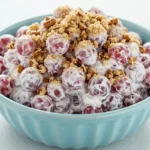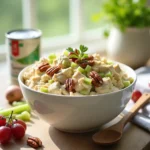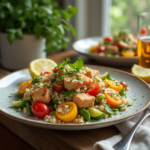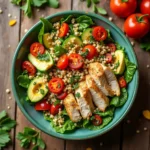Introduction
Welcome to our guide on crafting a low calorie breakfast that tastes amazing. This recipe offers a healthy breakfast option that fits well into any busy morning routine. With clear steps and simple ingredients, you can create a breakfast that is both nutritious and satisfying.
A low calorie breakfast does more than just keep your calorie count in check—it provides the energy you need to power through your day. Eating a healthy breakfast can boost your mood, support weight management, and fuel your body with essential nutrients. This guide is built around practical advice and straightforward instructions. It shows you how to prepare a meal that is not only low in calories but also full of flavor and texture.
In the sections that follow, you will learn about the key benefits of choosing a low calorie breakfast. We explain how each ingredient plays a role in making a meal that is light yet filling. The recipe highlights common elements found in many breakfast recipes and ideas, such as whole grains, fresh fruit, lean proteins, and a mix of textures that keep your morning meal interesting. Whether you are searching for breakfast recipes that are quick to prepare or looking for a healthy breakfast that supports your weight loss goals, this guide is your starting point.
Our approach is simple. We use fresh ingredients and uncomplicated methods to create a breakfast that stands out in both taste and health benefits. This recipe is ideal for those days when you need a grab-and-go breakfast that won’t slow you down. Enjoy the process as you learn how each step adds to the final delicious result.

This introduction sets the stage for a step-by-step guide to making a low calorie breakfast that is designed to keep you full until lunch. Get ready to explore the benefits, ingredients, and practical tips that make this recipe a delightful choice for your morning meal.
Table of Contents
Key Benefits
A low calorie breakfast offers numerous benefits that set the stage for a productive day. Eating a breakfast that is light yet satisfying can help control your calorie intake while providing the energy you need. With around 200 calories, a healthy breakfast supports weight management by reducing the likelihood of overeating later in the day. Lean proteins like egg whites or Greek yogurt add muscle-building nutrients without extra calories.
In addition, a low calorie breakfast boosts energy levels. Combining whole grains with fresh fruit gives you a steady release of energy to fuel your morning activities. This nutrient-rich meal improves mental focus and physical endurance, keeping you alert and active throughout your day.
The ingredients in a low calorie breakfast are simple and natural. Foods such as oatmeal, yogurt, and toast deliver vitamins, minerals, and fiber that contribute to health. These ingredients are easy to prepare, making breakfast ideal for busy mornings. Quick options like overnight oats or a grab-and-go wrap provide flexibility for lifestyles.
Moreover, a low calorie breakfast promotes fullness. The blend of protein, fiber, and healthy fats helps control hunger until lunch. This balance supports a steady metabolism and reduces the need for snacking. Customizable recipes let you adjust flavors while keeping the meal light and nutritious.
Overall, choosing a low calorie breakfast enhances diet quality and sets a positive tone for the rest of your day. It is a simple, effective way to invest in your health from the start. Enjoy every healthy bite.
Ingredients
For a low calorie breakfast that tastes amazing, each ingredient is carefully selected to offer balanced nutrition without excess calories. This list provides a mix of lean protein, whole grains, and fresh fruit, ensuring you enjoy a meal that fuels your body and delights your palate.
- Egg Whites (3 large):
A lean source of protein that helps build muscle and promotes fullness, egg whites are essential for a protein-packed start to your day. - Low-Fat Greek Yogurt (1/2 cup):
This creamy ingredient boosts protein content while supplying beneficial probiotics. It creates a smooth texture that blends perfectly with other ingredients. - Rolled Oats (1/3 cup):
A staple in healthy breakfast recipes, oats deliver fiber for steady energy and aid in digestion. They provide a satisfying base that keeps you full until lunch. - Unsweetened Almond Milk (1/2 cup):
Low in calories and dairy-free, almond milk offers a smooth, light liquid that complements the oats and yogurt, contributing to a balanced consistency. - Mixed Fresh Fruit (1/2 cup):
Choose from berries, apple slices, or banana chunks to add natural sweetness, vibrant color, and essential vitamins. Fresh fruit enhances the flavor while keeping the calorie count in check. - Low-Calorie Granola (1 tablespoon):
Adding a touch of crunch, granola offers texture and a subtle nutty flavor without adding too many calories. - Chia Seeds (1 teaspoon):
Rich in omega-3 and fiber, chia seeds boost the nutritional value and help maintain a pleasant texture. - Whole Grain Toast (1 slice, optional):
For those who enjoy a bit of extra crunch and fiber, whole grain toast is a great side option.
Feel free to adjust these ingredients based on your taste and dietary needs. You can substitute Greek yogurt with a plant-based alternative or swap in different fruits. Each element in this list works together to create a filling, flavorful breakfast that supports weight management and keeps you energized throughout the morning.

Instructions
Begin by gathering all your ingredients. Measure out 3 large egg whites, 1/2 cup of low-fat Greek yogurt, 1/3 cup of rolled oats, 1/2 cup of unsweetened almond milk, 1/2 cup of mixed fresh fruit, 1 tablespoon of low-calorie granola, 1 teaspoon of chia seeds, and prepare 1 slice of whole grain toast if desired.
- Prepare the Egg Whites:
In a small bowl, whisk the egg whites until slightly frothy. Heat a non-stick skillet over medium heat and pour in the egg whites. Stir gently while they cook until they are just set. Remove from heat and set aside. - Soften the Oats:
In another bowl, combine the rolled oats with the unsweetened almond milk. Let the mixture sit for about 5 minutes. This helps the oats soften and absorb the liquid, creating a creamy base. - Mix the Yogurt and Chia Seeds:
Stir the low-fat Greek yogurt and chia seeds into the softened oats. The chia seeds will swell slightly and add extra texture and nutrition to your breakfast. - Add the Fruit:
Fold in the mixed fresh fruit gently, ensuring that the flavors blend well without mashing the fruit too much. - Assemble Your Dish:
Place the egg whites on a plate and top with the oatmeal and yogurt mixture. Sprinkle the low-calorie granola over the top for a satisfying crunch. If using, serve the whole grain toast on the side.
These clear, easy steps lead you to a balanced, low-calorie breakfast that fuels your morning with taste and nutrition. Enjoy your meal!
Pro Tips and Variations
To make your low calorie breakfast even more enjoyable, consider these pro tips and creative variations. Adjusting ingredients and methods can help tailor the dish to your taste while still keeping it nutritious and light.
Pro Tips:
- Pre-Prep Ingredients: Measure and store your ingredients the night before. Keeping egg whites, oats, and fruits prepped helps speed up your morning routine.
- Cooking Technique: Use a non-stick pan for egg whites to avoid extra oil. Stir continuously for a soft texture and even cooking.
- Consistent Texture: When combining oats with almond milk, let them sit for 5 minutes to absorb the liquid. This creates a smooth, satisfying base that blends well with yogurt.
- Flavor Balance: A pinch of salt in the egg whites can enhance their flavor without adding calories. Experiment with herbs or a dash of pepper if you prefer a savory twist.
Variations:
- Fruit Variations: Swap mixed fruits with seasonal berries or sliced kiwi for a different burst of flavor. Choose fruits that are naturally sweet and rich in vitamins.
- Dairy-Free Option: Replace Greek yogurt with a plant-based alternative, such as coconut or soy yogurt, to suit dietary preferences while still providing creaminess.
- Extra Crunch: If you enjoy additional texture, try topping your dish with a sprinkle of nuts or seeds instead of granola. They add a nutty flavor without significantly increasing calories.
- Savory Option: Omit the fruit and use chopped spinach or tomatoes to create a savory breakfast bowl. A dash of your favorite herbs can bring out a fresh, earthy taste.
By using these tips and variations, you can customize your low calorie breakfast to match your personal taste and nutritional needs while keeping the meal enjoyable and practical.
Serving Suggestions
For a low calorie breakfast that is both healthy and appealing, presentation plays a key role. Arrange your dish in a way that enhances both flavor and visual appeal, making it a delight to start your day.
Begin by placing the cooked egg whites neatly on one side of your plate. Position the creamy oats and yogurt mixture in the center to serve as the base. Top this mixture with an array of mixed fresh fruits to add color and natural sweetness. Drizzle a small amount of unsweetened almond milk over the fruit to create a subtle shine and extra moisture. Finally, sprinkle the low-calorie granola evenly over the top to add a pleasing crunch.
For a quick breakfast on the go, consider layering these components in a portable container. Start with the oats and yogurt layer, add the fruit next, and finish with granola and a light dusting of chia seeds for texture. This arrangement not only looks attractive but also preserves the freshness and separation of flavors until you are ready to enjoy your meal.
If you prefer a more structured presentation, use a clear bowl to display the layers. Place the oat-yogurt blend at the bottom, add the fruit in the middle, and finish with a topping of granola and a few fresh mint leaves for a burst of color and refreshing taste.

These serving suggestions create an inviting and well-balanced meal. Choose the style that suits your routine best, ensuring you enjoy every bite of your nutritious, low calorie breakfast.
Conclusion
In summary, crafting a low calorie breakfast that tastes amazing is easier than you might think. This guide has shown you how to combine simple, wholesome ingredients into a meal that fuels your day without excess calories. By choosing nutrient-dense items like egg whites, Greek yogurt, oats, and fresh fruit, you create a balanced dish that not only supports weight management but also boosts your energy and overall well-being.
The recipe and steps outlined emphasize both flavor and health benefits. With the instructions provided, you can prepare a meal that is quick enough for busy mornings and customizable to suit your personal preferences. Whether you add extra spices, switch out fruits, or try a dairy-free yogurt alternative, each adjustment can keep the dish fresh and exciting without compromising its low calorie goal.
Remember, a healthy breakfast lays the foundation for a successful day. It kick-starts your metabolism and helps maintain stable energy levels until your next meal. The balanced combination of protein, fiber, and natural sweetness ensures you remain satisfied and focused. It also minimizes the need for additional snacking, making it easier to stick to your calorie goals.
This recipe offers more than just a meal; it provides a reliable strategy for enjoying breakfast that is nutritious, flavorful, and flexible. Embrace the process of experimenting with variations, and find the version that best fits your taste and lifestyle. Enjoy the benefits of a light yet filling breakfast that truly makes your morning shine, setting a positive tone for the rest of your day.
FAQs
What is the lowest calorie breakfast to eat?
A very low calorie breakfast typically includes simple, whole ingredients. For example, egg whites combined with non-fat Greek yogurt and a small portion of oats can create a meal under 200 calories. This combination offers protein, fiber, and essential nutrients without extra calories. Adjust portions to meet your needs while ensuring a balanced meal.
Is 200 calories too low for breakfast?
For many, 200 calories may seem light. However, a low calorie breakfast around this range can work well if the meal is nutrient-dense and balanced. It is important to combine protein, fiber, and healthy fats to keep you satisfied. Individuals with higher energy needs or active lifestyles might require additional calories, so adjust based on your personal nutritional requirements.
What is the best breakfast for losing weight?
The best breakfast for weight loss focuses on high-quality, nutrient-dense foods. Meals that include lean proteins, such as egg whites or Greek yogurt, paired with whole grains like oats, and a variety of fresh fruits create a filling and balanced option. This approach stabilizes blood sugar, curbs hunger, and supports a healthy metabolism, making it easier to maintain a calorie-controlled diet.
What is filling for 200 calories?
A filling 200-calorie meal relies on a balance of protein and fiber. Options like a small bowl of oatmeal topped with berries, or egg whites with a side of fresh fruit, can keep you full until your next meal. The key is to choose ingredients that expand in your stomach and provide lasting energy without extra calories.




